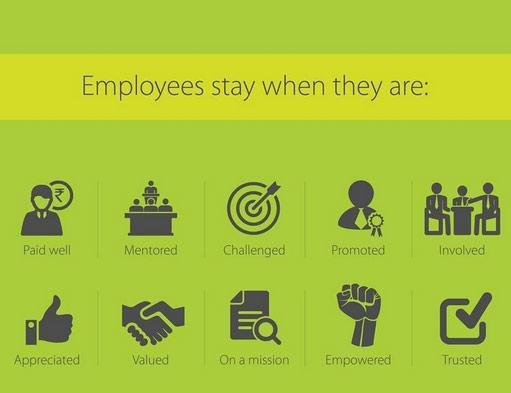In my last two posts, I wrote about the importance of understanding your current environment before setting out on a search for new data storage solutions; and I touched on the topic of Flash Arrays. Understanding your current environment will help you establish a baseline for where to start but should also help you document where you want to go and the business problems you need to solve with a new Storage solution.
I wrote about Flash because it has become a viable solution recently as prices have come down and drive sizes have increased (at least one storage array provider is offering a 4TB SSD). In fact, according to one source, over 60% of array startups are built around Flash. Consequently, you won’t be able to research Storage Arrays today without having a flash discussion.
While Flash solutions have certainly come down in price recently, they still cost more than spinning disk. However, the reason Flash has become a viable solution is largely due to the technology advancements that help maximize space utilization while still providing the performance we would expect. The challenge comes in trying to sort out all the implementations of these technologies across the various Flash Storage Array providers.
The primary space-saving technologies employed across most Flash solutions today include de-duplication, compression, and thin provisioning. Still other storage solutions may use a combination of Flash technology with a tier of inexpensive nearline HDD. All of these technologies are aimed at giving you the performance of Flash and the capacity of traditional HDD at a cost that can still fit within most budgets.
As I looked at the space-saving technologies used by many of the most popular Flash solutions, the importance of understanding your business requirements (apart from any particular technology) was underscored for me. It’s very easy to get caught up in a discussion about inline vs. post de-duplication or the method by which thin-provisioning is accomplished, etc. And while these discussions may be useful at one level, the real question you need to ask is whether or not the solution will meet the business requirements you defined at the beginning of your Storage Array search.
 Storage technology is evolving at an incredible pace, and there are more choices today than ever before. Is spinning disk a technology that’s going away? Eventually. But spinning disk isn’t dead yet, and the technology still meets the requirements of many businesses. The death of tape for backup has been heralded for years now, but it is still being bought and deployed because it meets the needs of certain environments. If you decide that Flash Arrays are the direction you want to go, then remember to focus on your business requirements and don’t get too caught up in the implementation of any particular technology unless it has a real business value.
Storage technology is evolving at an incredible pace, and there are more choices today than ever before. Is spinning disk a technology that’s going away? Eventually. But spinning disk isn’t dead yet, and the technology still meets the requirements of many businesses. The death of tape for backup has been heralded for years now, but it is still being bought and deployed because it meets the needs of certain environments. If you decide that Flash Arrays are the direction you want to go, then remember to focus on your business requirements and don’t get too caught up in the implementation of any particular technology unless it has a real business value.
Regardless of the type of storage array you choose, be sure to understand answers to the following questions:
- How does the solution provide for capacity expansion?
- How do you increase performance on the array?
- What does management of the array look like?
- How would you migrate from your current array?
- Are there any drivers or agents required on hosts that would use the array?
- What level of integration does the array have with your Compute platforms (Microsoft, VMware, Hyper-V, AIX, etc.)?
You’ll certainly have developed your own list of questions to add to the above list.
After more than 15 years in the technology field, I am very aware of the positive benefits of understanding and using technology to increase business productivity. Each year we hear of new platforms, new applications, new appliances, and new solutions to help companies grow bigger and better. These changes can include technology refreshes, BYOD initiatives, new software and application implementation, harnessing the power of Big Data and social media, and the list goes on and on.
We all know that technology, when used properly, can increase productivity. Studies show that the right tools and the right solutions will make your business run more effectively and efficiently; however, businesses, no matter how big or how small, all have the same primary component that drives them to success or failure: their employees. A business cannot and will not survive without people.
What are businesses two largest challenges outside of keeping up with technology trends?
- Increasing Employee Productivity
- Keeping and Maintaining Employees
Ironically, most of the ways you can motivate an employee to be a productive member of your team are also the same ways to keep your employees. According to Lifehack.org, here are things you can do to increase employee productivity:
- Create a family-like atmosphere. Make sure your employees know that regardless of how you feel about them that you always have their backs and are willing to go to war for them.
- Know your employees’ backgrounds. Understanding your employees’ motivation will allow you to structure a support system that is both beneficial and motivating for each employee.
- Train, train, and retrain. Employees are more likely to be productive when they understand what exactly is expected from them and they are given the training to perform such a task. Training gives confidence, and confidence leads to employees who are productive.
- Small incentives will go a long way. You will be surprised at how powerful a $10 gift card can be in the work place. It has nothing to do with the money or the monetary value but more with the fact that there is a goal that all employees are trying to reach.

- Make your word the final say. Opinions and suggestions are great, but ultimately the final say should always come from their superiors. Valuing the opinions and listening to the suggestions of employees before making a decision will show them that they are part of a team and will give them a sense of contribution to the company. The more they feel that their voice is being heard, the more they will contribute to the cause of a company.
- Employees are people as well. Employees have lives outside of the workplace, and our lives outside of the workplace should always take precedence over work. That single mother you employ may not always have a babysitter lined up. The college student may have a final that he must complete to graduate. Be respectful and understanding when life happens to your employees, and you will have an appreciative and productive worker.
- Give them the right equipment. Make sure that the everyday equipment in the office works! There is nothing worse than having an employee say that they couldn’t complete their daily tasks because “the computer was down.”
- Answer questions. Just like a man would rather be lost than ask for directions (sorry, guys), an employee may feel it is better to do something wrong than to ask for how to do something right! For various reasons, such as being scared or not wanting to show a lack of specific knowledge to what is expected from them (see number 3), an employee will not move. You are the person in charge for a reason. Hammer the point home that asking questions is a good thing. Answering questions clearly and in a timely manner will keep the productivity going.
- Celebrate victories no matter how small. When an employee sees that every positive contribution to the team is acknowledged, he or she knows that their actions count and that what they do is really making a difference.
- Be a role model. When people see the boss working, they will also work. When they see the boss slack off, they will do the same. A workforce will always mirror their immediate supervisors.
- Not one employee is more valuable than the others. There is nothing worse in the work force than seeing employees not being treated as equals. We all have experienced having a peer who was viewed as the “favorite.” We also remember how discouraging and resentful that made us. If you are a boss and you have favorites, you run the risk of having a split workforce.
Earlier I stated that most of the ways you can motivate an employee to be a productive member of your team are also the same ways to keep your employees. The chart below outlines 10 things that employees seek when determining if they should stay or if they should go. The values that employees seek are also concepts that will make them more productive.
“Employees who believe that management is concerned about them as a whole person – not just an employee – are more productive, more satisfied, more fulfilled. Satisfied employees mean satisfied customers, which leads to profitability.”
–Anne M. Mulcahy, Former CEO of Xerox Corporation
Cloud Solutions or On-Premise? It’s a question our customers are asking more often, and it is undoubtedly one of the biggest trends in the IT industry right now. For on-premise, there is more to consider than how much new hardware/software is needed to put a solution into place. And for cloud, there is more at stake than a recurring monthly service cost.
For content services and content delivery networks (CDNs) that are faced with viewers that are increasingly consuming video “on-demand,” the decision to revamp their existing delivery infrastructure is forefront on their list of modernization projects.
While many Cloud options exist, and are definitely a viable option for many providers, for those with adequate resources, the on-premise HPE Moonshot solution has many clear advantages.
Multicast (true broadcast) is only available with on-premises (Moonshot) delivery. Cloud solutions are not multicast-enabled; and, as such, all content acquisition/delivery will be Unicast.
• The Multicast source relies on multicast-enabled routers to forward the packets to all client subnets that have clients listening. Each client that listens to the multicast adds no additional overhead on the server. The same load is experienced on the server whether only one client or 1,000 clients are listening.
• Multicast scales easily and uses bandwidth efficiently, which will help control traffic loads and conserve bandwidth. This benefit gives the ability to offer new services (generating additional revenues and strengthening long-term profitability).
• Conversely, Unicast is a one-to one connection between the client and the server. Each Unicast client that connects to the server takes up additional bandwidth.
Bottom line: Multicast is a better way to minimize network traffic and optimize bandwidth when multiple users are accessing the same live video source.
The HPE Moonshot solution provides greater network control; reliability; and, most importantly, dedicated network bandwidth (availability).
Moonshot has the ability to aggregate NICs for increased versatility in network configuration and routing. The HP Moonshot solution avoids problems associated with multi-tenant environments. Cloud solutions bring the risk of one tenant periodically consuming the majority of system resources, creating a greater sensitivity to scalability issues and potential security issues.
With HPE Moonshot:
• Better to control the ingest before encode
• Reduction in encoding cost over long term with owned equipment
• Increased ability to troubleshoot and RCA with accuracy
• Can use subscriber based multicast for acquisition
• Fewer resources are consumed both physically and logically
• Ability to further secure and adapt platform




